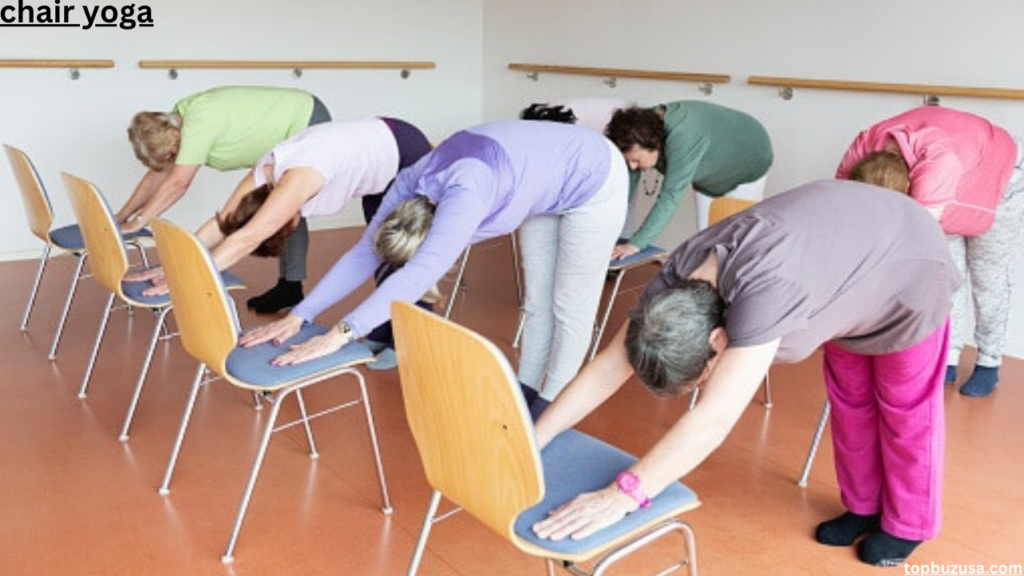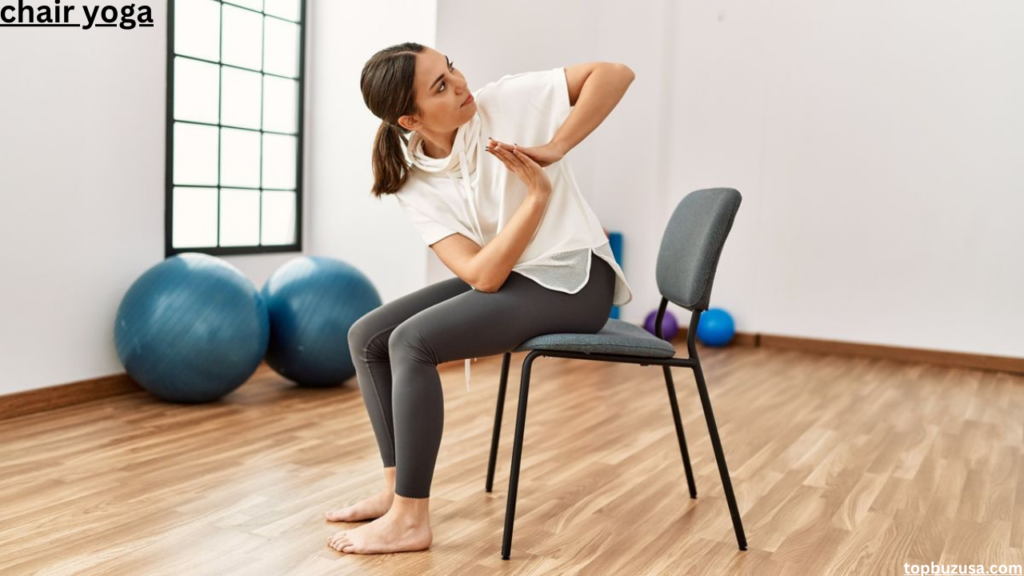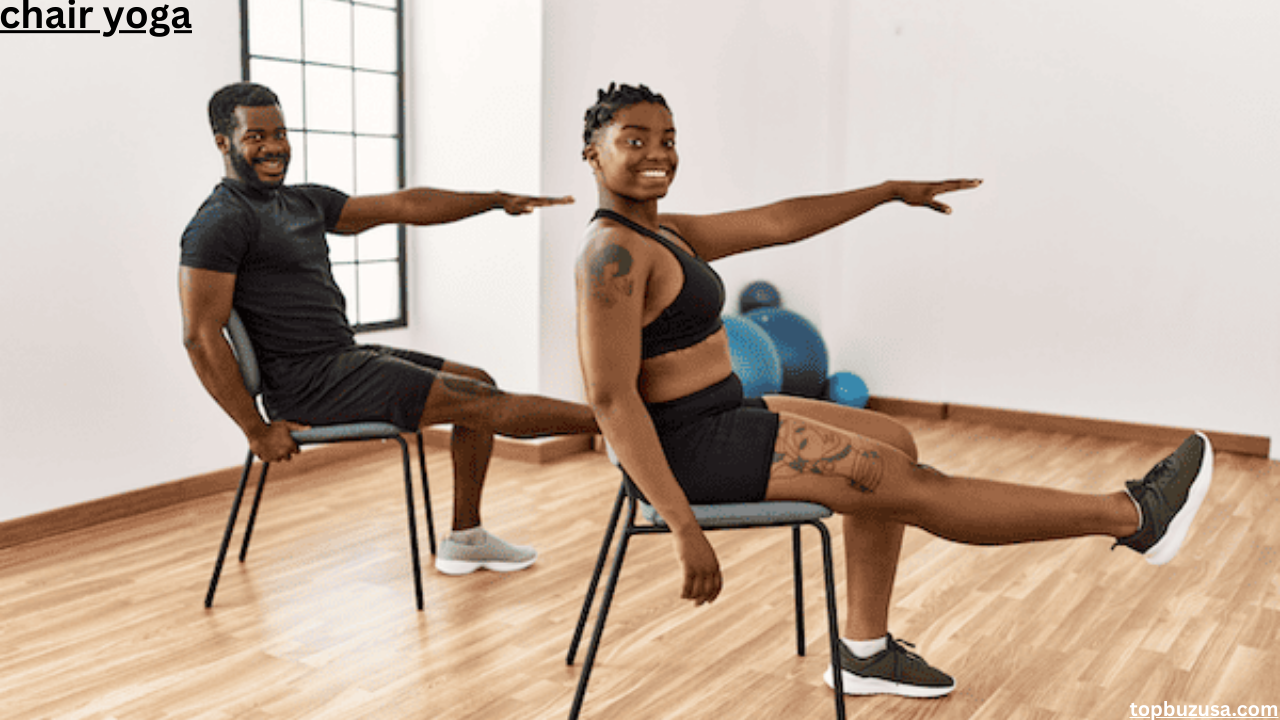In the ever-evolving world of fitness and wellness, accessibility has become more important than ever. Chair yoga, a gentle form of yoga practiced while seated or using a chair for support, is gaining popularity for its inclusiveness and adaptability. Designed especially for people who find traditional floor yoga challenging, chair yoga opens the door to physical activity for seniors, office workers, individuals with limited mobility, and absolute beginners.
Unlike more intense workouts that require flexibility, balance, and endurance, chair yoga’s welcomes every body—regardless of age, fitness level, or physical condition. It offers a safe, supportive environment for individuals to experience the transformative benefits of yoga without the fear of injury or discomfort. As a mindful movement practice, chair yoga strengthens the connection between breath and body, promotes inner calm, and improves overall health—right from your seat.
In today’s sedentary lifestyle, where sitting for hours is the norm, chair yoga’s provides a practical and powerful way to infuse mindful movement into daily life. Whether you’re looking for stress relief during work hours, gentle stretches to relieve stiffness, or a gateway into regular exercise, chair yoga is a flexible, accessible, and effective option. Let’s explore how chair yoga works, its many benefits, and how you can incorporate it into your wellness routine.
What is Chair Yoga? Origins and Philosophy

Chair yoga is an adaptation of traditional yoga that allows individuals to practice poses while seated or using a chair for balance. Rooted in the ancient philosophy of yoga, chair yoga retains the same principles of breath control (pranayama), mindfulness, and physical postures (asanas), but reimagines them for those who may struggle with the physical demands of floor-based practice. Developed with inclusivity in mind, chair yoga emphasizes that yoga is for everyone, regardless of limitations or circumstances.
Its origin lies in the broader movement of adaptive yoga, which seeks to modify traditional practices to accommodate different needs. Pioneers of chair yoga recognized that while yoga could be highly beneficial to seniors and people with disabilities, conventional formats often excluded these groups. The introduction of the chair as a prop created new possibilities, making yoga more approachable, comfortable, and sustainable for all.
Unlike traditional yoga, chair yoga minimizes the risk of injury and strain by supporting the body through all postures. Participants can focus on controlled breathing and gentle movements, allowing for a deeper connection with the body and mind. Poses are often modified to be done entirely from the chair or with the assistance of a chair for standing postures. This structure makes the practice ideal for individuals with balance issues, joint pain, or other health concerns.
At its core, chair yoga’s celebrates the yogic philosophy of self-awareness, self-care, and non-judgment. It’s not about touching your toes or holding a perfect pose—it’s about connecting with yourself in a compassionate, supportive way.
Health Benefits of Chair Yoga
The benefits of chair yoga extend far beyond flexibility. Physically, it enhances joint mobility, improves posture, strengthens muscles, and supports better balance—all without the need for standing or lying on the floor. Many participants report a reduction in chronic pain, particularly in the lower back, neck, and shoulders, after regular practice. For seniors and those recovering from injury, chair yoga serves as a gentle but effective form of rehabilitation and movement therapy.
Mentally and emotionally, chair yoga is a powerhouse. The practice encourages mindfulness, helping individuals slow down, tune into their breath, and relieve stress. Scientific studies have shown that gentle yoga practices, including chair yoga, can significantly lower cortisol levels, improve mood, and reduce symptoms of anxiety and depression. The meditative aspects of chair yoga promote clarity, enhance focus, and can even aid in managing conditions like insomnia and PTSD.
For office workers, the simple act of pausing for 10 minutes to practice chair yoga can ease the strain of long hours at a desk. Regular sessions can combat “tech neck,” improve circulation, and energize the body mid-day, boosting productivity and mental alertness.
Populations with special needs, such as individuals with Parkinson’s, arthritis, or multiple sclerosis, often find chair yoga uniquely suited to their capabilities. The practice empowers them to maintain independence and mobility while cultivating a positive relationship with their bodies. In essence, chair yoga’s offers a path to holistic wellness—physical, mental, and emotional—through simple, intentional movement.
Essential Chair Yoga Poses and Sequences
You don’t need expensive gear or a yoga studio to begin chair yoga. All you need is a sturdy, armless chair placed on a flat surface. Wear comfortable clothes that allow you to move freely. If you’re at home, place the chair in a quiet space with enough room to stretch your arms and legs without obstruction. Safety is key—make sure the chair doesn’t slide and your feet can rest flat on the floor.
For beginners, simple poses like Seated Mountain Pose (Tadasana) establish posture and breath awareness. Follow with Seated Cat-Cow, which gently loosens the spine, and Chair Twist, which promotes spinal mobility and digestion. Seated Forward Bend stretches the hamstrings and back, while Seated Warrior variations energize and strengthen the lower body.
Chair yoga’s sequences can be tailored to your goals. Start your day with a 10-minute energizing flow that includes arm stretches, gentle twists, and side bends. For mid-day breaks, try a 15-minute desk routine to combat stiffness and stress. End your evening with a calming 20-minute flow featuring forward folds, deep breathing, and guided meditation to prepare for restful sleep.
Incorporate breathing techniques like box breathing or diaphragmatic breathing to deepen relaxation. These mindful practices anchor the body in the present moment and amplify the benefits of physical movement. With consistency, these routines become not just a workout, but a wellness ritual.
Chair Yoga in Daily Life: Practical Tips and Inspiration

Integrating chair yoga into your daily routine doesn’t require a major lifestyle change. It can be as simple as taking five minutes between meetings to stretch or setting aside time before bed to unwind. For office workers, chair yoga’s offers an antidote to sedentary stress, improving posture and enhancing productivity. Try doing a few poses during conference calls or lunch breaks to reset your energy.
Consistency is key to seeing benefits, but that doesn’t mean you need to practice for hours. Set realistic goals—such as three 10-minute sessions per week—and gradually increase as your body becomes more familiar with the movements. Use reminders, journal your progress, or join online communities to stay motivated.
For those looking to deepen their practice, countless online resources are available. YouTube offers free guided classes from certified instructors who specialize in chair yoga. Apps like “Yoga for Seniors” and platforms like Gaia and Yoga International provide structured programs tailored to your needs. If you prefer social interaction, look for local community centers or senior wellness programs that offer chair yoga’s classes.
The beauty of chair yoga lies in its accessibility and adaptability. Many people share stories of regaining confidence, reducing pain, and finding joy in movement again. Whether you’re 25 or 75, fit or facing physical challenges, chair yoga’s meets you where you are and helps you move forward.
Conclusion
Chair yoga is more than just exercise—it’s a gateway to wellness, empowerment, and mindful living. By adapting traditional yoga into a seated format, it makes the practice accessible to people of all ages and abilities. Whether you’re recovering from injury, managing a chronic condition, or simply looking for a way to stay active without getting on the floor, chair yoga offers a supportive, gentle, and effective solution.
It nurtures the body through movement, strengthens the mind through mindfulness, and uplifts the spirit with breath-centered awareness. The best part? You can begin anytime, anywhere—with just a chair and a little curiosity.
So take a seat, take a breath, and let chair yoga guide you into a more balanced, centered life.
FAQs About Chair Yoga
Is chair yoga suitable for people with chronic pain or medical conditions?
Yes, chair yoga is specifically designed to be gentle and adaptable, making it ideal for those with chronic pain or mobility limitations. Always consult with your healthcare provider before starting any new exercise regimen.
How often should I practice chair yoga’s to see results?
Practicing 2–3 times a week can lead to noticeable improvements in flexibility, posture, and stress reduction. Daily practice enhances these benefits even more.
Can I do chair yoga at work without special equipment?
Absolutely! All you need is a sturdy chair and a few minutes. Desk-friendly sequences can easily fit into a busy workday.
What kind of chair is best for chair yoga’s?
Use a firm, armless chair with a flat seat and stable legs. Avoid chairs with wheels or overly soft cushions.
Is chair yoga a good workout for weight loss or fitness goals?
While it’s not a high-intensity workout, chair yoga improves muscle tone, mobility, and metabolism—key components of any fitness plan.





